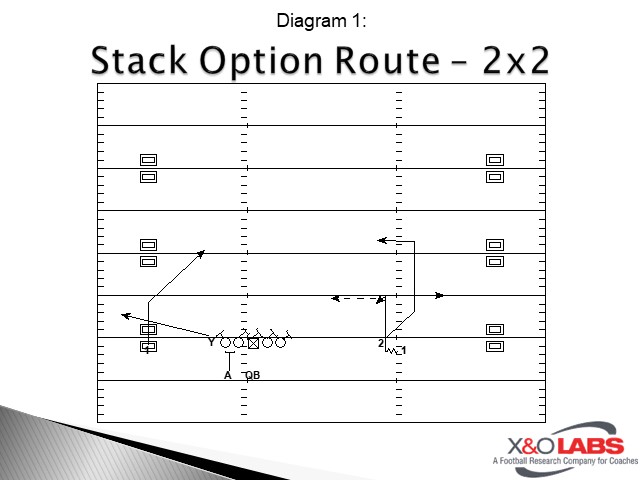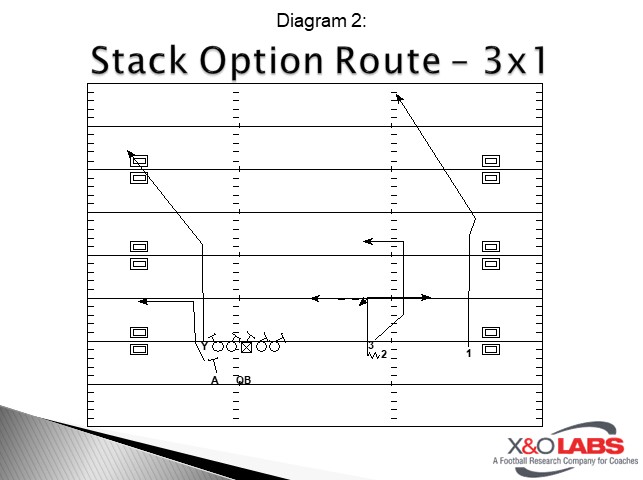By Danny Freund
Wide Receivers Coach
University of North Dakota (ND)
Twitter: @dfreund7
Introduction
We will detail our 5-yard option routes and concepts from the wide receiver position in this report. The option routes give us a chance to get the ball out quickly and allow our wide receivers to get open against different coverage looks. We will talk about some of the details we teach in reading the coverage and how to run the route to maximize yards after catch.
We had success running the option routes out of a stack (2 WR) and bunch (3 WR) alignments. We will discuss the concepts and adjustments against zone and man coverage. The first thing we ask the receivers to identify pre-snap is man or zone coverage. Determining man or zone gives them a good idea of how they will best run their routes.
In a stack or bunch set, they think man coverage if there is press coverage on one of the receivers. Another thing to look for to determine coverage is number of defenders – if it’s three defenders defending a 3 WR bunch look, then it’s most likely man coverage. If it’s two defenders versus the 2 WR stack, then it’s some sort of man. If the defense plays four-on-three against a bunch or three-on-two versus a stack, then we assume zone.
In our option route concepts, reading the zone coverage is important because a Cover 2 or “cloud” corner in the flat will adjust the option route. We typically ask our option route to read an “open” or “closed” flat versus zone coverage. A “closed” flat would mean the receiver sees a zone corner playing Cover 2 or Cloud technique, taking away our access to the flat.
Stack WR Option Route Concept


This concept we run from 2x2 or 3x1 formations. Our inside wide receiver in the stack runs widen departure Dig route at roughly 12 yards. He needs to stay flat at the top of the route. We widen departure for three to four steps based on our tighter alignment. If the concept is coming from the field side, we prefer the Dig to be caught around the hash.
If the ball is on a hash, we want the split of the Dig receiver to be 1-2 yards inside the hash. If we put the “stack” into the boundary, we want the split of the Dig receiver about 2 yards on top of the numbers. The split is critical because it helps spacing and throwing windows for both routes.









